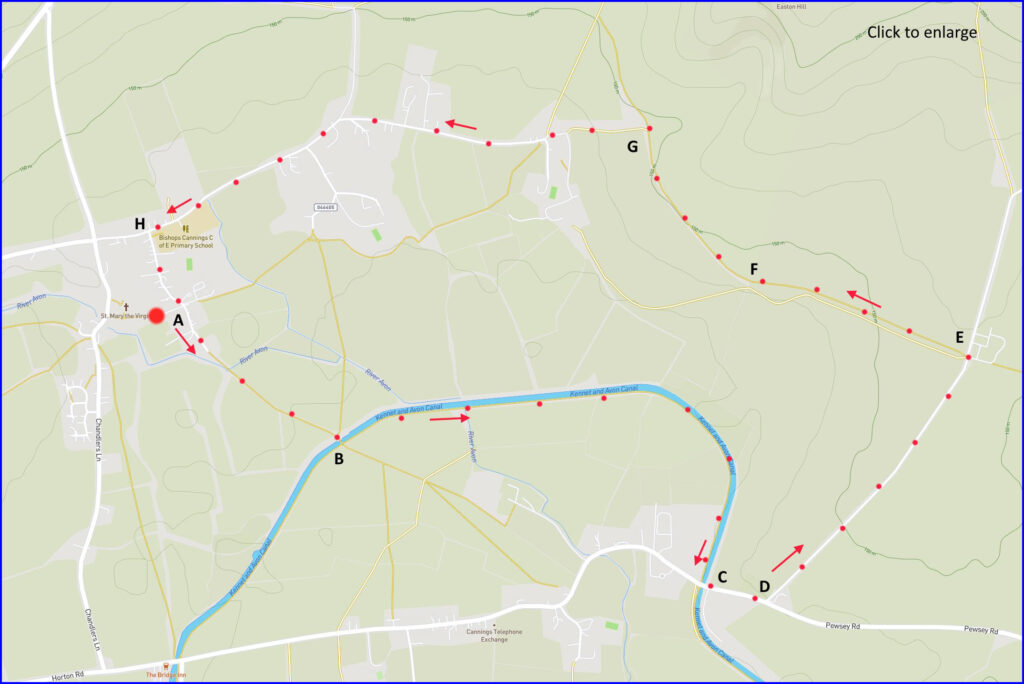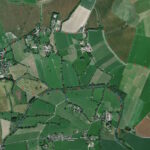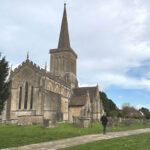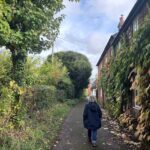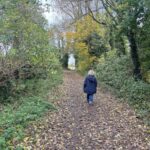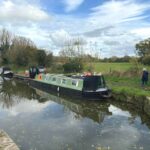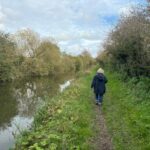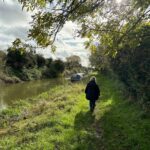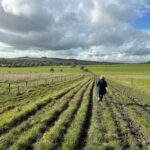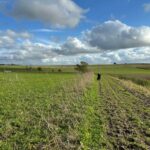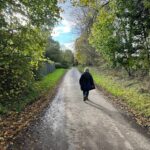A 4.5-mile, circular, walk starting from Bishops Cannings: quiet lanes, canal and field tracks. Click map to enlarge. Click here for an aerial view. Click here for a downloadable PDF guide of this page. (There is a GPX route option here for phone/tablet download. But only follow this link after watching this GPX help video). Friendly warning: all files relating to walks are published here on good faith but on the understanding that users must be responsible for their own safety and wellbeing.
(Routes from map points + metres to next point)
Start: From the church walk forward until right turn on lane 300m
A: Walk on path towards canal bridge 560m
B: Cross and walk canal until road bridge 1.5Km
C: Under bridge and up side to road walk right to junction 180m
D: Take farm restricted road towards farm 840m
E: Into field opposite farm, walk forward 650m
F: Paths split – take left through gate and forward 500m
G: At copse turn left and follow path to lane 1.5Km
H: Take left turn at primary school, back to church 250m
The pictures below are in the order things were seen on this walk. Clicking on any one will enlarge it (and the slideshow)
The Walk
The route is relatively easy – quiet farm lanes, a small section of minor road between C and D (but there are verges and little traffic). The field path between E and G can be uneven and muddy if there has been recent rain but there are no obstacles otherwise. The main attractions are the church in the village and the open views across the Vale of Pewsey
The village
There is little domestic architecture of note in Bishops Cannings but the church (St Marys) is distinctive and unusually large for a small community. In fact it has been termed a ‘little Salisbury cathedral’. Perhaps, in part, because his area was previously part of that bishop’s estate. The church dates from the Norman period but it is pretty consistent Early English in design, although altered in the 14th and 15th century.
One of its distinguished vicars (from 1593-1623) was George Ferebee. The 17th century Wiltshire historian, John Aubrey, reports that he was a fine musician. Although he also wrote plays for performance in the village and organised football matches (the village still has an active football team). Ferebee also erected an organ for the church and wrote poetry. When Queen Anne passed through the village he impressed her with his welcome. She arranged for him to be chaplain to the King. His village greeting to included a celebration poem, with the lines.
Stand still, great queen, amidst your loving people,
And listen to the bells of Bishops Cannings steeple
Aubrey reckoned that in the end the village could – thanks to Ferebee – take on all-comers in music, bell ringing and football during his time. The daughter of a later vicar has written an account of (more recent) childhood life in this village. It is still available (internet) – “A Wiltshire Childhood” by Ida Gandy (1929).
Otherwise, the village is known for its occasional association with the Moonrakers story. This is an impertinent account of 18th century Wiltshire smugglers who were approached when recovering their goods from a village pond. They excused their actions by claiming they were merely trying to rake in the moon which they had seen reflected in the water – they believed it had fallen from the sky. In fact, Bishops Cannings has no village pond so if there is anything in the story folklore experts reckon it might have some association with nearby Devizes.
After your walk you might like to head for the Crown pub – which has spacious grounds (rather child-oriented) and has an active kitchen.
